- Discovering the Hill
- No content found
- Plan your visit
- No content found
- Agenda
- Shop
Saint-Clare’s monastery was set in Besançon, in the area of the Cathedral. For some time then, the community had been contemplating to leave the town to ensure a spiritual presence in a place more suitable to silence and contemplation. They were asked to come by the owners of the site. They sold their monastery in Besançon in 2009 to settle on the hill. They lived in the two houses by Le Corbusier for two years, while the monastery was being built.
The order of Saint-Clare was founded in Assisi in the 13th century by Saint-Francis and Saint-Clare. The rope-cord worn by the nuns on their garment has three knots, reminding them of the three vows they have made: obedience, poverty, and chastity. The Poor Clares are a contemplative order, which means that their lives are above all punctuated by prayer and work. They must lead a life as simple and as regular as possible. Being contemplative means for them to inhabit the world while slightly standing back to be better united to it.
The nuns live from the alms offered by the faithful and from their work. In the two workshops of the monastery, the nuns make garments for priests and communicants. Their little vegetable garden enables them to be somewhat self-sufficient.
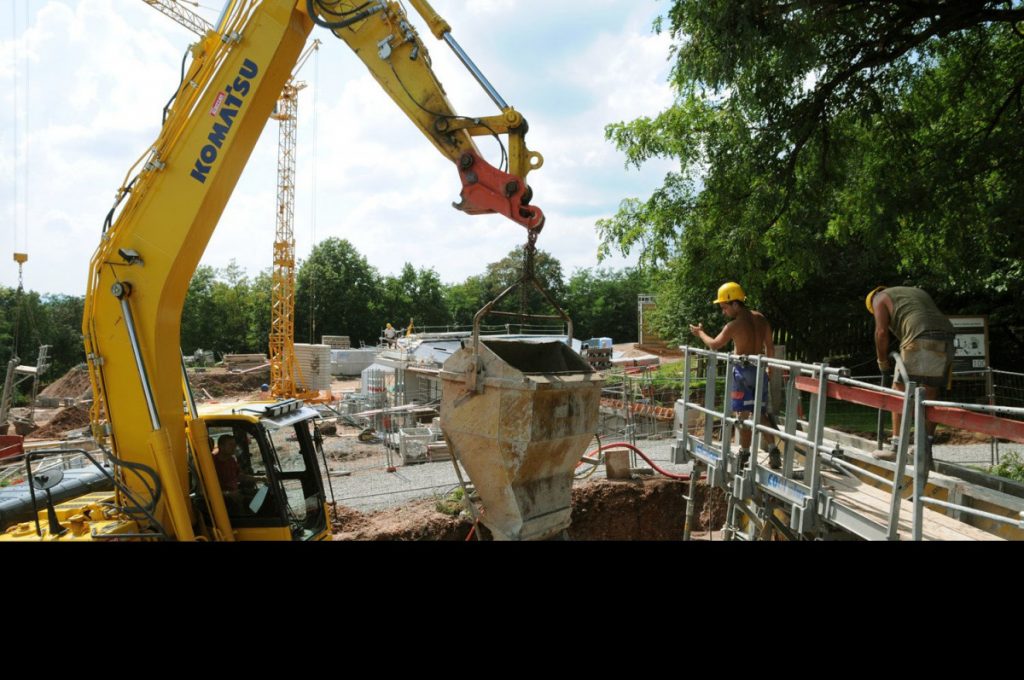
Building new facilities could only be done by an architect able to enter into dialogue with Le Corbusier.
Many internationally famous architects are approached about taking the job, but it is the Italian Renzo Piano’s studio, RPBW, which answers favorably from the start.
The author of the Beyeler Foundation in Basel and of the Tjibaou Cultural Center in Noumea, Piano is known as an architect able to make architecture and nature interact.
The project of building a monastery next to Le Corbusier’s masterpiece rapidly caused a stir. The architect’s admirers were upset and tried to have the project cancelled, or at least changed.
The controversy reached a climax during a debate organized at the Cité de l’Architecture in 2008, with Le Corbusier Foundation, Renzo Piano, the Mother Superior, and the association which owns the site.
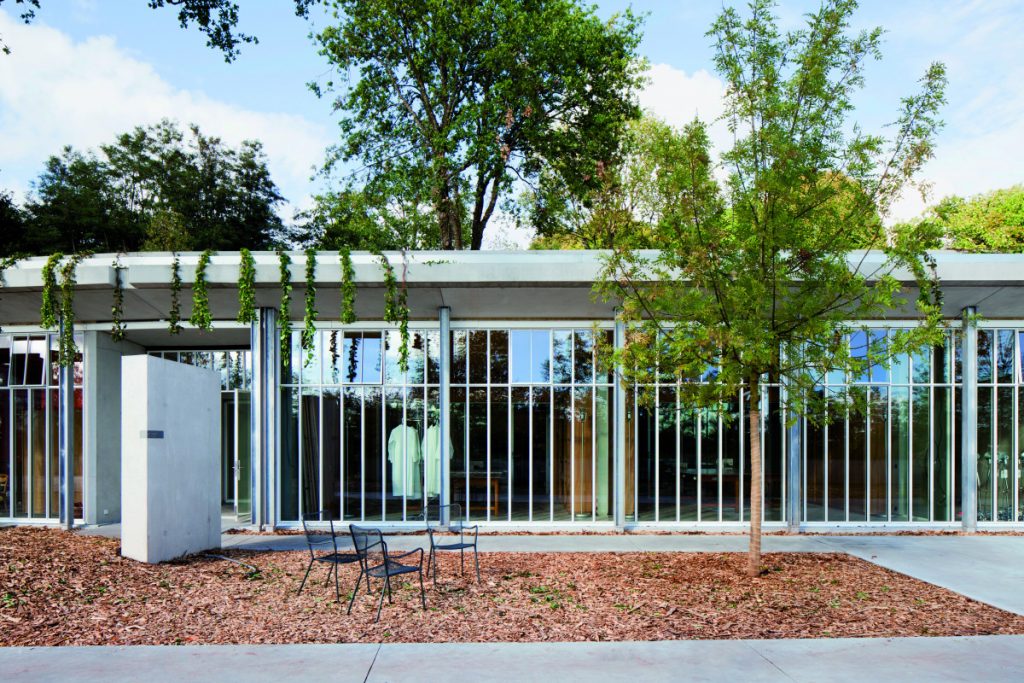
As a consequence of numerous criciticisms from those who opposed the project, Renzo Piano’s plans evolved. The monastery would be built on two levels and adapt itself to the contour lines of the hill so it couldn’t be seen from the Chapel.
A third level below would welcome the visitors, the gatehouse. It would replace an old little farm which was used as a reception desk and was at the time extremely dilapidated.
Reinforced concrete was the obvious material from the start for the monastery, both to make it able to bear the load of earth under which the buildings are buried and to echo Le Corbusier’s Chapel. Look closely at this concrete and see how it has evolved since the times of the Chapel. As in Notre-Dame du Haut, it is raw concrete. Its simplicity refers to the nuns’ wish for a simple and austere lifestyle. Extra-fluid high-quality concrete came out perfectly smooth from the formworks. It is so fine that it kept the joints intact. On its surface there are holes of the keys which hold the form panels straight as the concrete is poured.
Light is present in the monastery and the gatehouse, built on the same pattern. The large bay-windows link interior and exterior spaces. The interval between the aluminium sections was discussed between the nuns and Renzo Piano as the sisters did not want to feel immediately outside. The width between the metal sections give an impression of protection and openness at the same time.
For the rest, the monastery is very small and simple: twelve rooms for the nuns, a library, a kitchen and a refectory. Finally, a shared room serves for meetings.
The furniture is also very simple, but beautiful and sturdy. The furniture you can see is in the oratory, it was designed by Renzo Piano.
The monastery has no cloister, because Renzo Piano wanted to open it to world, as he put it himself.
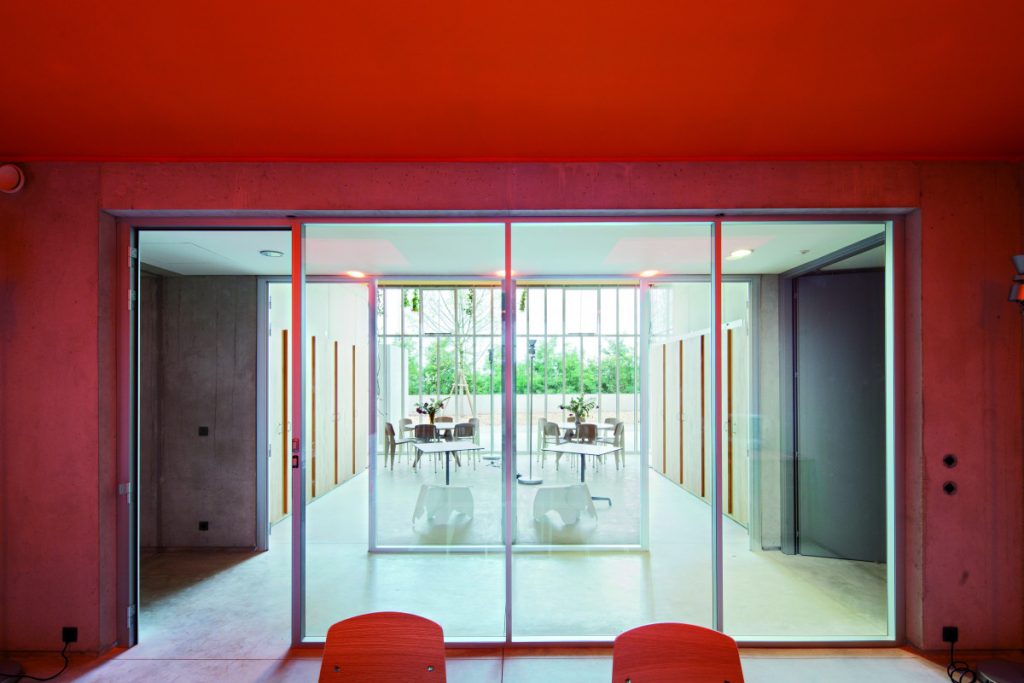
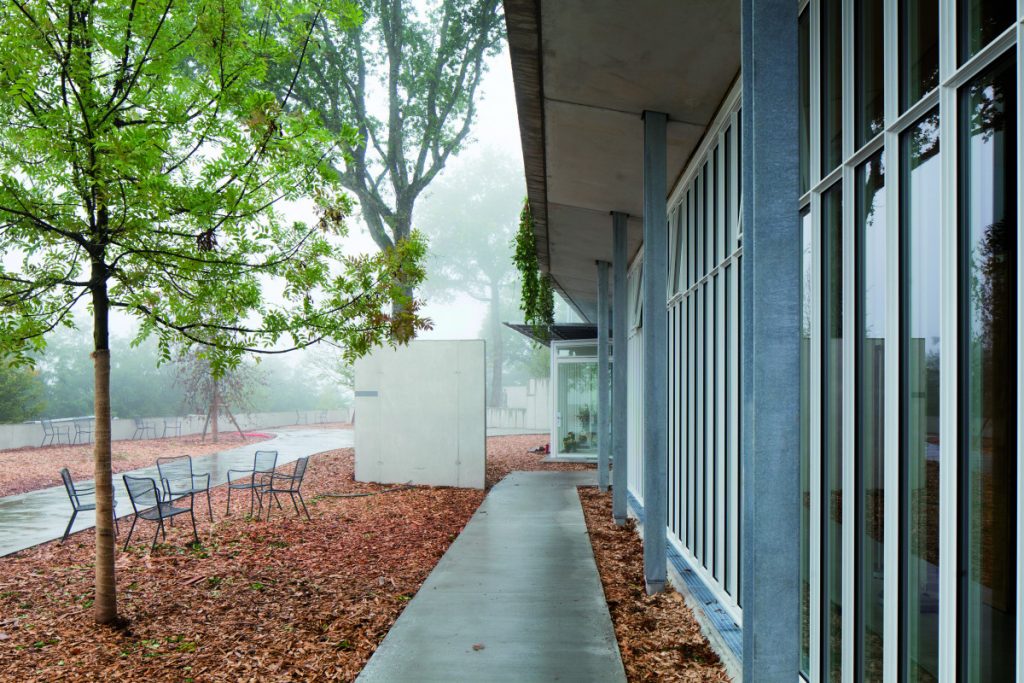
The oratory is the most beautiful part of the monastery. It is the small chapel where the nuns meet everyday for prayer and mass in winter, when Le Corbusier’s Chapel is too cold to be used.
The sisters actively took part in the design of their oratory and they describe it as a cave, the undecorated place where Saint-Francis met Christ at the gates of Assisi. It is a sober place, in keeping with the nuns’ wish of poverty, where only raw concrete can be seen. Like the Chapel, the oratory is designed according to the movements of the sun. In the morning, the altar wall is flooded with light. For the nuns, it represents the open tomb of Christ, the light of Resurrection. In the evening, when the sun goes down behind the bay-windows, the light strikes the orange- painted floor. Then it is a twilight glow which invades the is reflected by the smooth concrete. The oratory by Renzo Piano can be seen as Renzo Piano’s answer to Le Corbusier’s Chapel. We can find the same attention given to light. Likewise, the vault seems to be borne by light, as if it had no support. The floor, going slightly down, leads softly the faithful towards the choir. One step separates the nave from the space reserved to the priest.
The very simple furniture has different origins. The tabernacle comes from the old monastery in Besançon and dates back to the 1960’s. The beechwood chairs were designed by Renzo Piano’s son, Matteo Piano, and produced by the firm Riva, in Milan. Finally, the altar, the ambon and the stoup were made of olive-tree and were designed by Renzo Piano. He tried to give a feeling of weightlessness to the altar thanks to the tablecloth which hides the feet.
As in the Chapel, architectural innovation is borne by a long history. It is present here with the preaching cross of Saint-Vincent Ferrier. This great saint, a Dominican from the end of the Middle-Ages, offered it in 1417, two years before he died, to the monastery in Besançon. With this cross, the saint had travelled across Europe to preach to the crowds and keep the Church united at the time of the Great Western Schism. This cross is quite unusual as it bears two representations of Christ: a sculpted one representing Him dead at the front, and another painted one, representing Him resurrected. This cross represents the mystery of Easter and promises us eternal life.
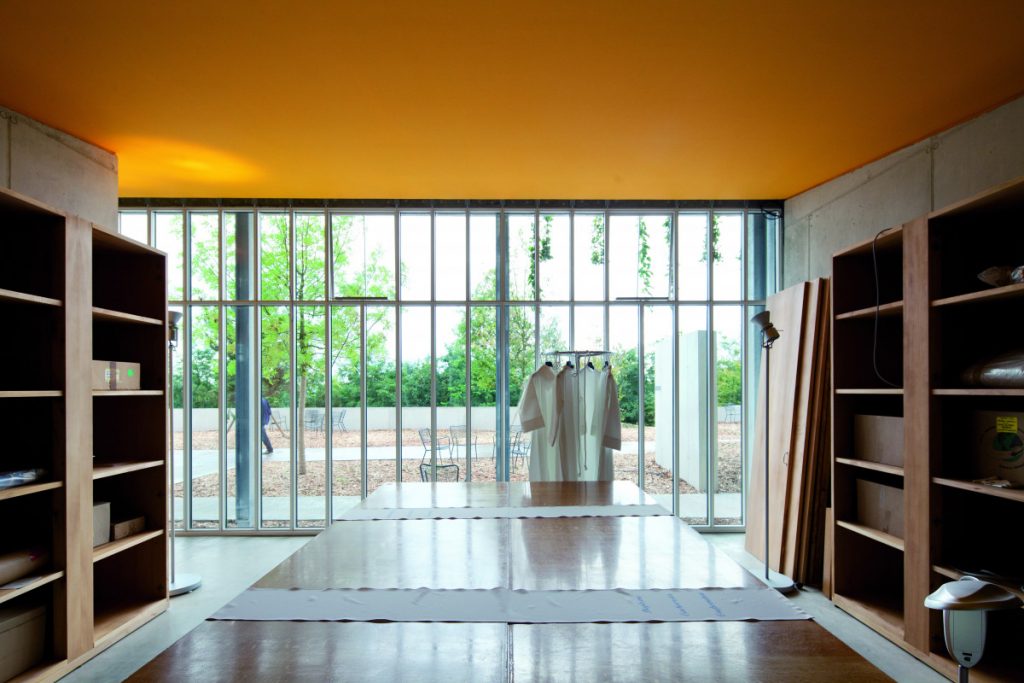
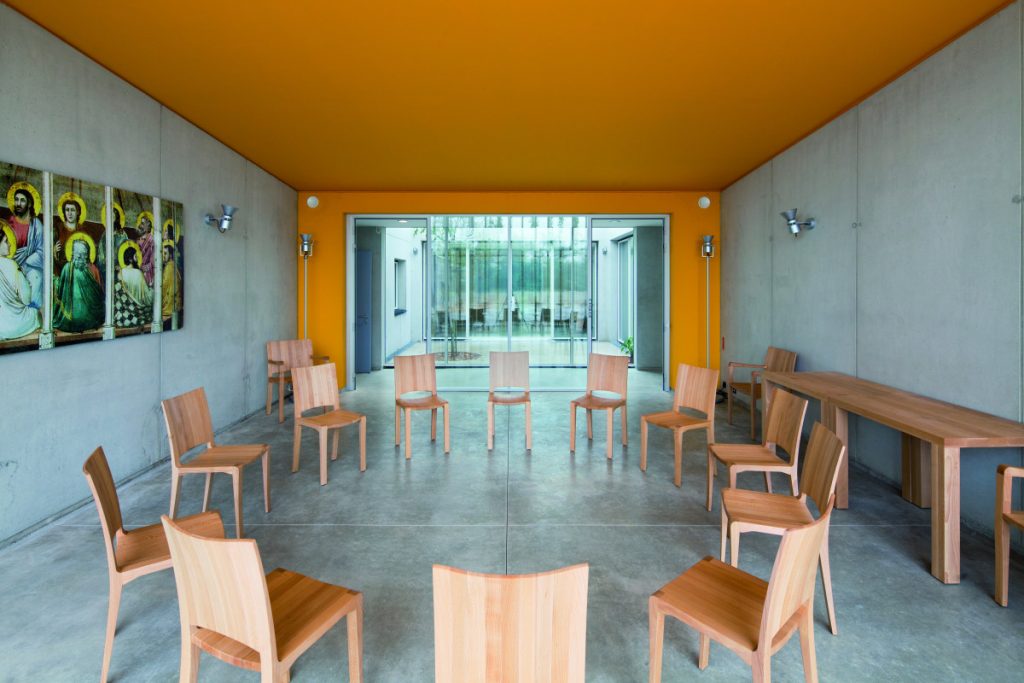
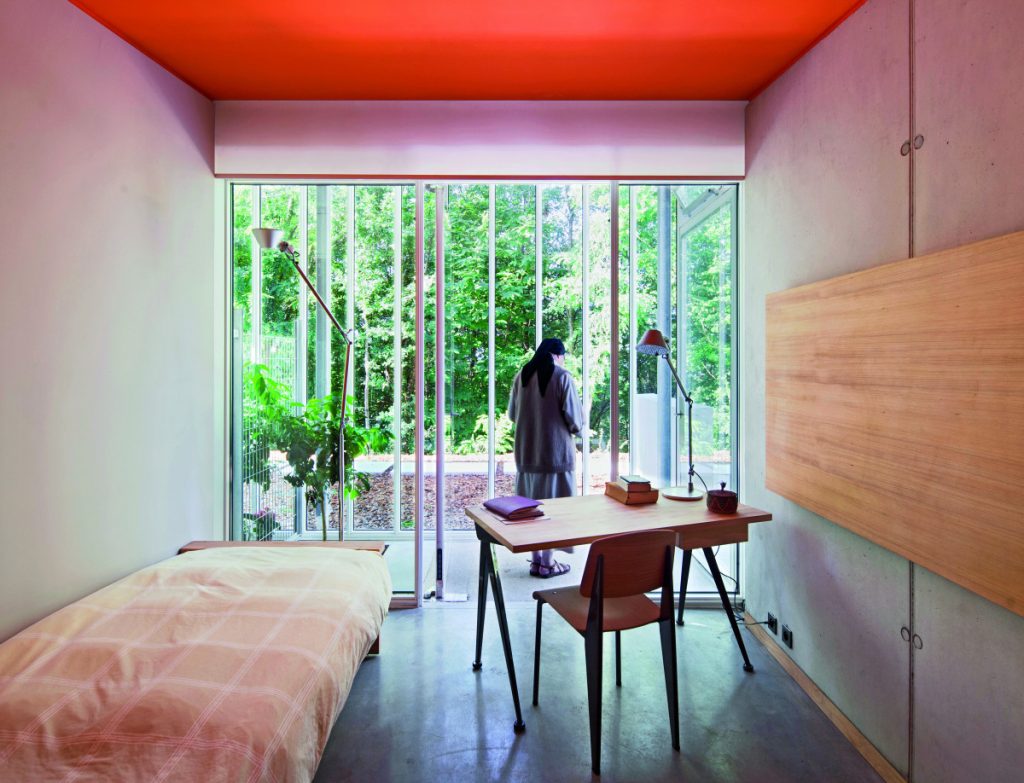
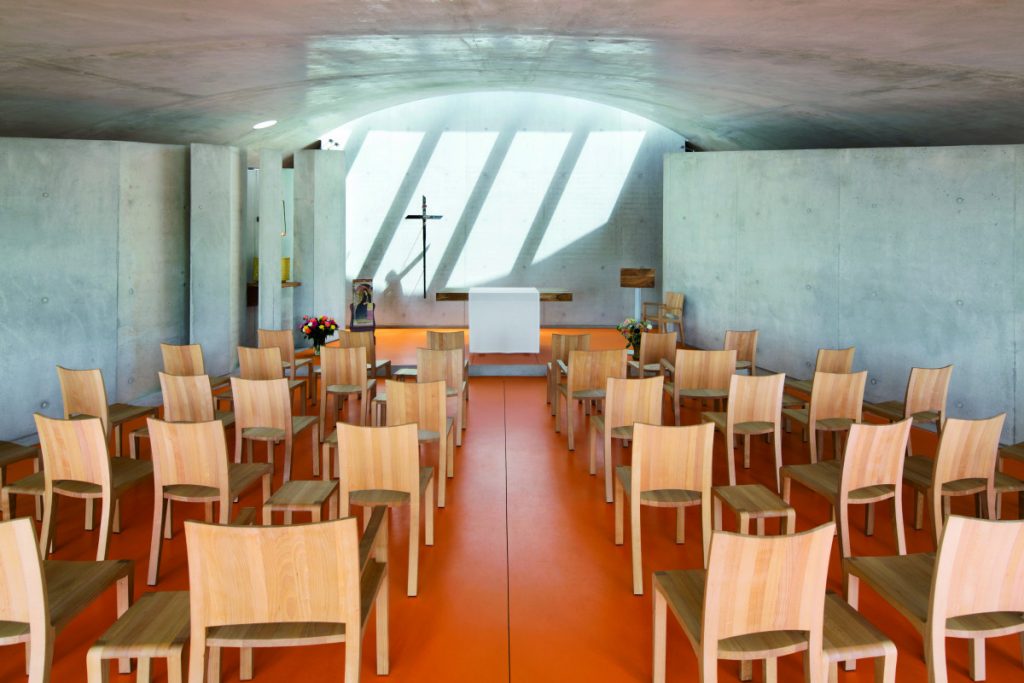
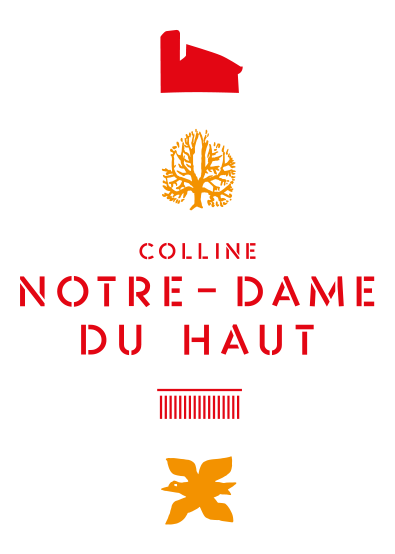
13 rue de la Chapelle
F-70250 Ronchamp
+33 (0)3 84 20 65 13
Contact
Until Friday 18 April 2025: 10am to 5pm
From Saturday 19 April 2025: 10am to 6pm
From Monday 12 October 2025: 10am to 5pm
Last admission: 30 minutes before closing time. Closed on 25 December and 1 January
For journalists
Connect
Educational resources
To go further
+33 (0)3 84 20 73 26
Contact
Réalisation DN Consultants